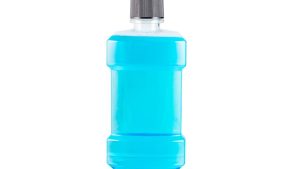Reviews
User Score
Rate This
Descriptions:
Having a beautiful smile can make a world of difference in the way that you feel about yourself. Having whiter teeth can also help you attract the right kind of people and build the foundation for good relationships. Achieving whiter teeth isn’t impossible, but it can be challenging to maintain results over time. That’s why it’s important to consider your food and lifestyle choices, as well as the reasons that you developed tooth discoloration in the first place.
How It Works
Teeth whitening is an easy and effective way to remove stains from your teeth and make them look whiter. It’s a great way to improve your smile and boost your self-esteem.
Stains & discoloration appear when compounds from the foods you eat (or from smoking) penetrate the porous enamel layer of your teeth and accumulate there. They’re not harmful, but they can be very unsightly.
Luckily, tooth whitening works by using hydrogen peroxide to break apart the staining compounds. It’s a safe and effective procedure with very few side effects.

The most common is temporary sensitivity to the peroxide, which subsides within 48 hours. However, it’s always a good idea to talk to your dentist before you whiten your teeth so that they can give you the best advice on which methods of whitening are best for you.
Teeth whitening is one of the most popular cosmetic treatments available today. It’s a great way to make your smile shine brightly, but it should be done carefully so that you don’t damage your teeth in the process.
Preparation
Teeth consist of a hollow chamber with nerves and blood vessels (called pulp), surrounded by a yellow hard substance called dentin. Enamel covers the dentin, forming a hard shell over the portion of teeth not encased in the jawbone (all but the roots).
As we age, our enamel may thin. This can leave a yellowish layer of dentin exposed on the surface. Bleaching products won’t help if your teeth have already lost enamel because they don’t affect the dentin.
However, you can still brighten your smile with a tooth-whitening treatment. It’s easy and fast, and it can dramatically improve the appearance of your teeth.

In order to prepare for a whitening procedure, you should take special care to avoid foods or drinks that stain your teeth. It’s also important to follow the instructions on the whitening product carefully and seek your dentist’s supervision before using it.
A professional whitening treatment uses concentrated hydrogen peroxide or carbamide peroxide to penetrate the tooth and break down darkly pigmented molecules within the hard tooth structure itself. It can make your teeth appear up to 1 or 2 shades lighter.
Treatment
Teeth whitening is an effective way to brighten your smile, and it can be a great option for people who want to whiten their teeth but don’t have the time or money for more invasive restorative treatments.
In-office whitening treatment involves a dentist applying a bleaching agent to your tooth surface. This usually comes in the form of hydrogen peroxide or carbamide peroxide, which are oxidizing agents that break down and minimize staining substances on your teeth.
Dentist-dispensed whitening kits are another option, although they are less effective than professional whitening methods. The concentration of whitening is lower and they are not as effective on dark stains or severe discoloration, so you may need to use them more frequently.

Home whitening strips and gels are also an option, but they can damage your teeth when used improperly. You should avoid using them for long periods of time and don’t use them with acidic drinks or foods, as these can make your teeth more sensitive.
Brush-on whitening products work well if you don’t like the feel of mouthpieces or strips, but they need to be applied for about 30 minutes before food or drink can touch them. They can also be irritating to your gums, so they’re not for everyone.
Conclusion

There are many benefits to teeth whitening methods, but there are also a few drawbacks that should be considered before making the decision. Some of the most popular tooth-whitening methods include using baking soda, bleach, and hydrogen peroxide. While these methods can be effective, they can also have a number of potential negative effects on your teeth.
Maintaining good oral hygiene is important for overall health, and mouthwash can be a valuable addition to your dental routine. The article “Should I Use A Mouthwash?” provides helpful information on the benefits and drawbacks of using mouthwash, including its effectiveness in reducing plaque and preventing cavities. For those considering teeth whitening, it’s important to understand the pros and cons of different methods. The article “Teeth Whitening – Pros and Cons of Different Methods” provides an overview of various teeth whitening options, from at-home kits to professional treatments. By incorporating the information from both articles, individuals can make informed decisions about their dental care, including whether or not to use mouthwash and which teeth whitening method is right for them.






